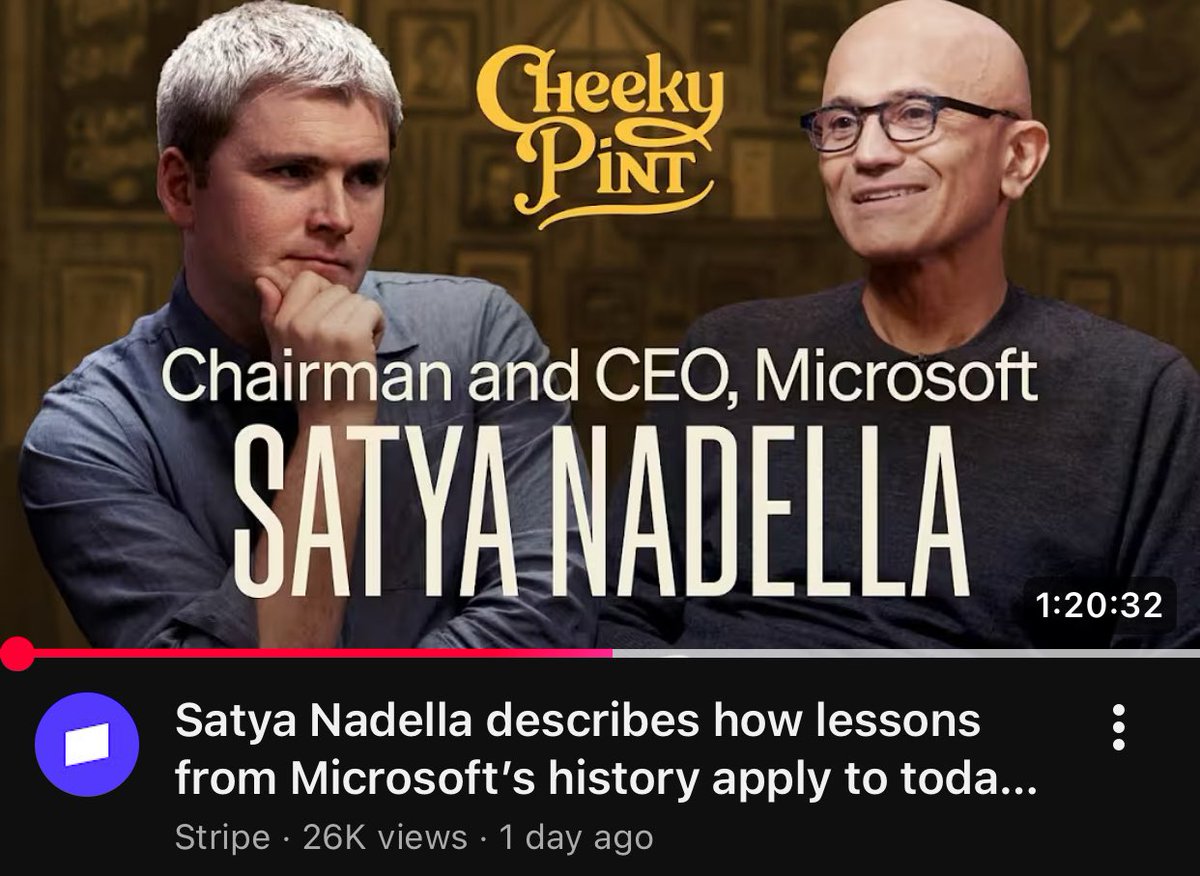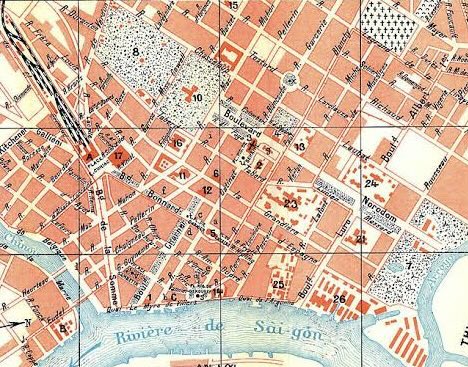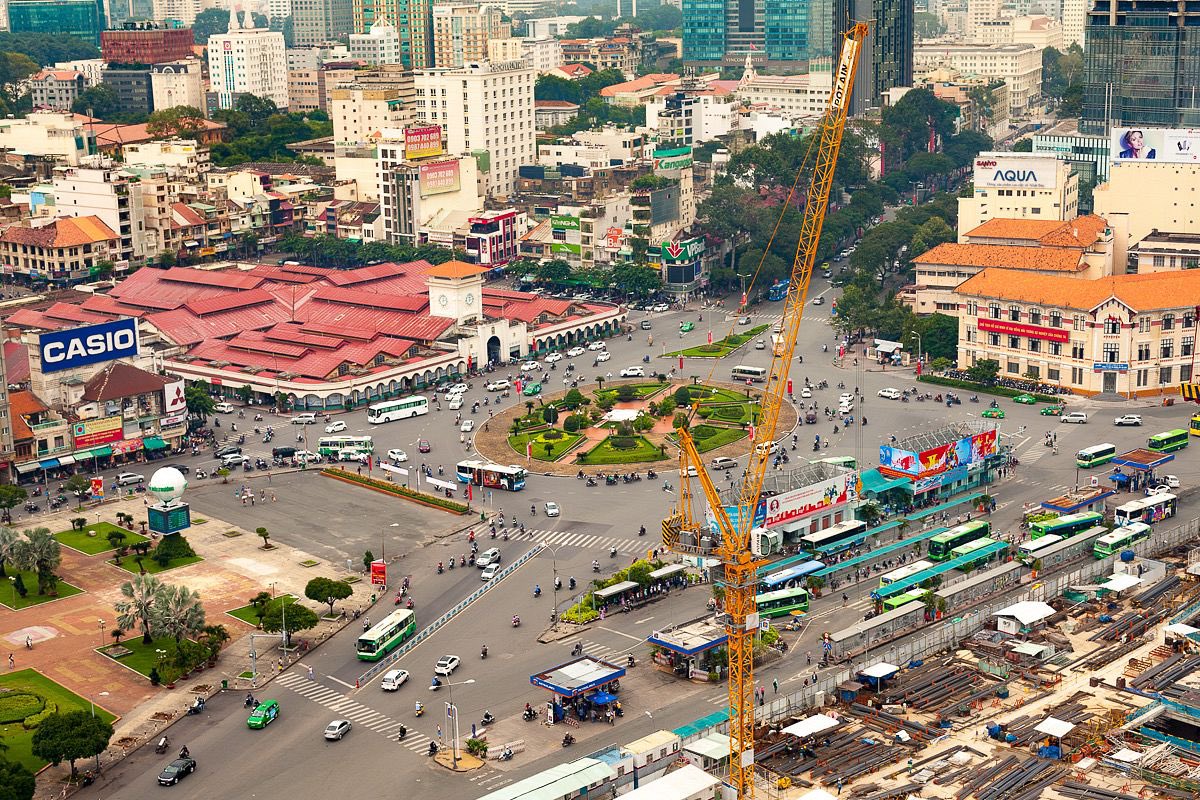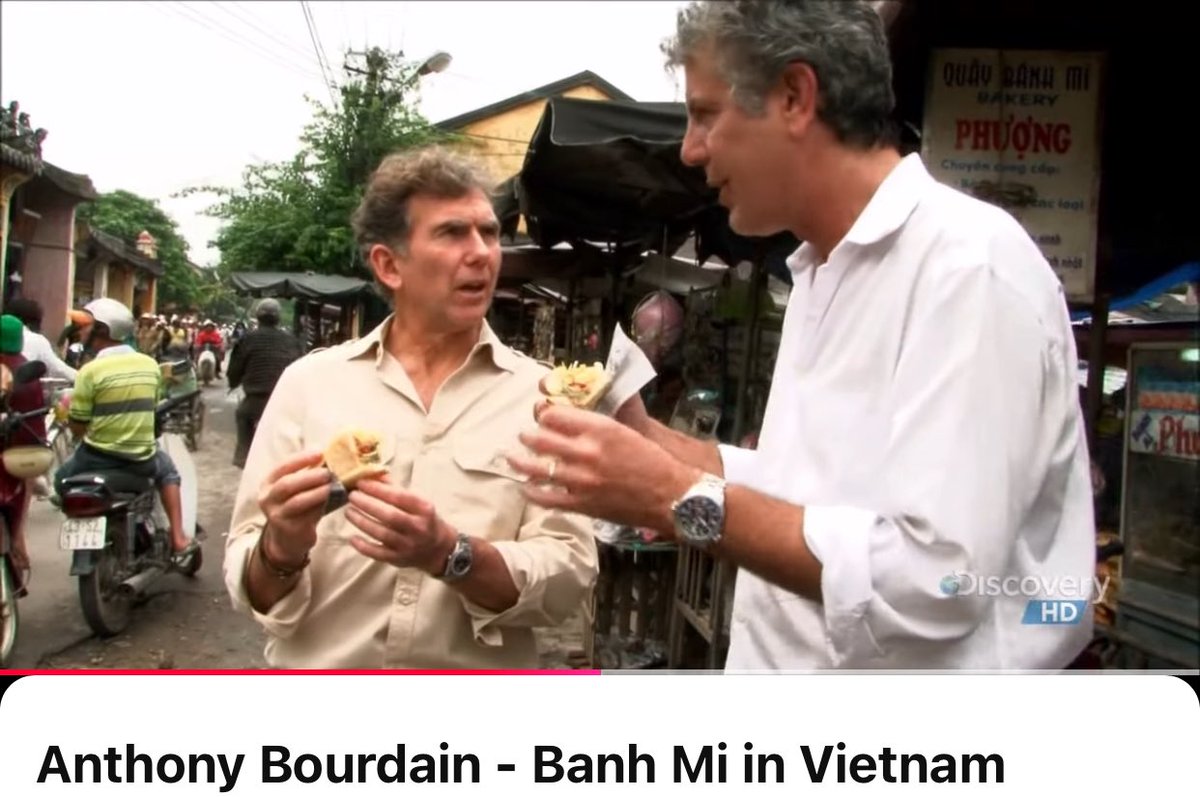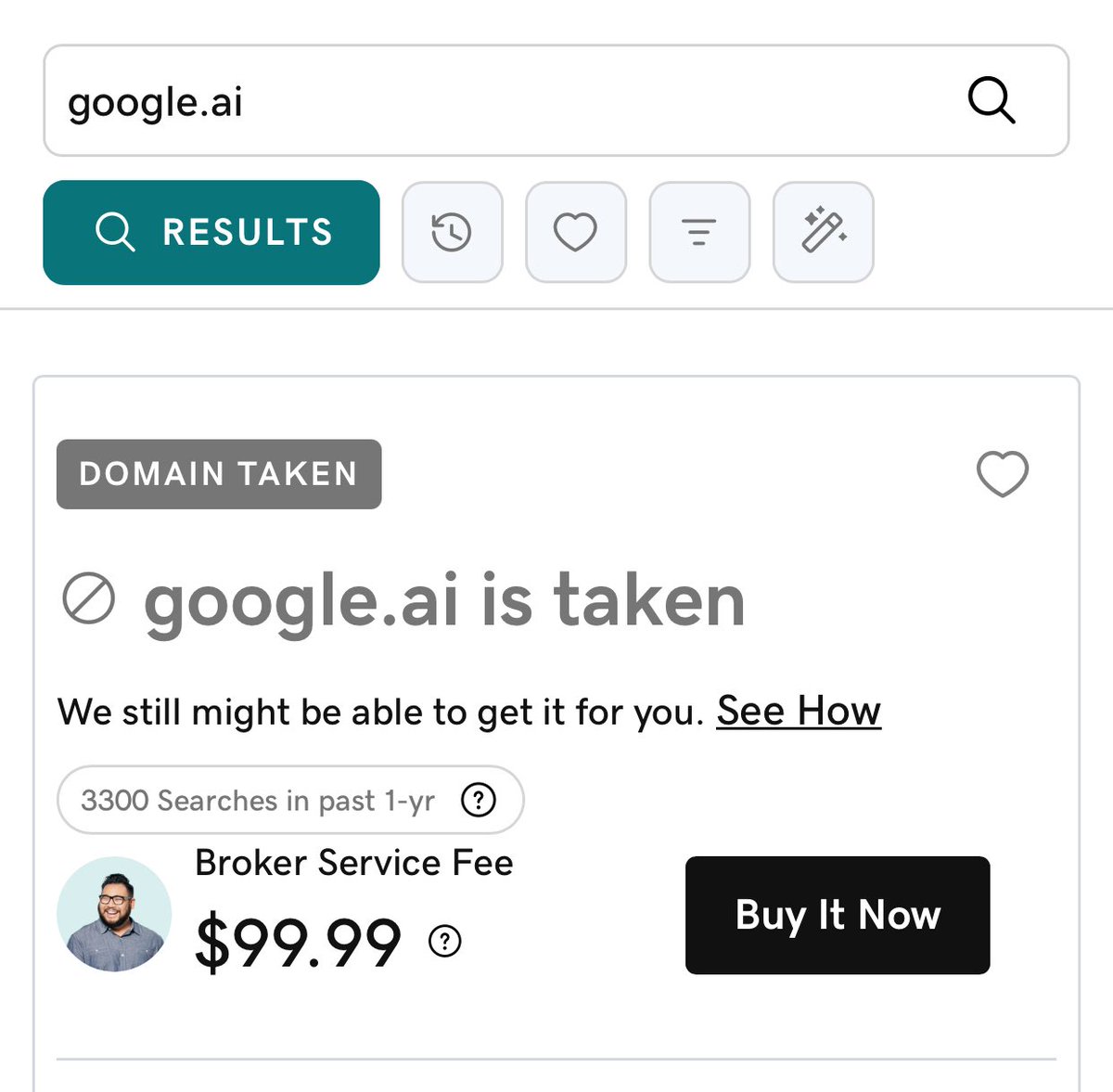Virgil Abloh just sold 60% of his streetwear brand Off-White to lux giant LVMH, where he serves as artistic director.
Incredibly, the Ghanaian-American has no formal fashion training (background = architect, DJ).
Here are 10 insights from a multi-disciplinary life.
THREAD🧵
Incredibly, the Ghanaian-American has no formal fashion training (background = architect, DJ).
Here are 10 insights from a multi-disciplinary life.
THREAD🧵

Background: Virgil Abloh was born in 1980 in Rockport, Illinois to Ghanaian immigrants.
His father (Nee) worked for a paint company. His mother (Eunice) was a seamstress, who taught him how to sew.
In his teens, Virgil -- an avid skateboarder, graffiti artist -- designed tees.
His father (Nee) worked for a paint company. His mother (Eunice) was a seamstress, who taught him how to sew.
In his teens, Virgil -- an avid skateboarder, graffiti artist -- designed tees.
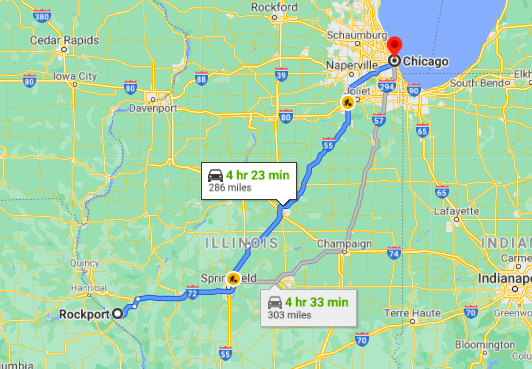
After high school, Abloh's parents wanted him to learn a practical career, so he enrolled in Civil Engineering at U. of Wisconsin-Madison.
He didn't want to be an engineer in the "classic sense". He kept making custom tees and DJ-ing (his dad passed down an interest in music).
He didn't want to be an engineer in the "classic sense". He kept making custom tees and DJ-ing (his dad passed down an interest in music).

In 2003, Abloh went to the Illinois Institute of Technology to get a Masters in Architecture.
One architect particularly inspired him: Rem Koolhaas, who designed buildings and also worked with the fashion giant Prada.
One architect particularly inspired him: Rem Koolhaas, who designed buildings and also worked with the fashion giant Prada.
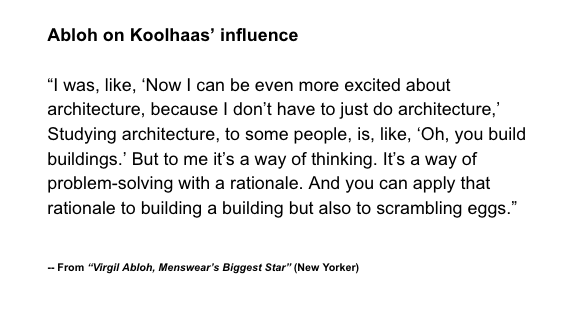
As Abloh wrapped up his Architecture degree, he met a rising star from Chicago: Kanye West.
West made a name for himself as a producer (e.g., Jay-Z's "Blueprint") but was cutting out on his own and surrounded himself with creatives.
Abloh's custom tees caught West's eyes.
West made a name for himself as a producer (e.g., Jay-Z's "Blueprint") but was cutting out on his own and surrounded himself with creatives.
Abloh's custom tees caught West's eyes.

Over the next decade, Abloh worked as West's "artistic fixer" on everything from his music to video to fashion.
The photo below came out of the 2009 Paris Fashion Week (Abloh far right). It was ridiculed at the time, but the pair was very serious about taking on the industry.
The photo below came out of the 2009 Paris Fashion Week (Abloh far right). It was ridiculed at the time, but the pair was very serious about taking on the industry.

Shortly after, West and Abloh interned in Rome at LVMH-owned brand, Fendi.
They were paid $500 / month and did standard intern duties (getting coffees, photocopying docs) working 9-5.
Insanely, this was during the making of West's "My Beautiful Dark Twisted Fantasy" album.
They were paid $500 / month and did standard intern duties (getting coffees, photocopying docs) working 9-5.
Insanely, this was during the making of West's "My Beautiful Dark Twisted Fantasy" album.

In 2012, Abloh launched his first fashion brand: Pyrex Vision.
Ever the multi-disciplinarian, the clothes was originally meant for a 10-min short film.
The name refers to the 2 ways for people to get out of the hood: pyrex (for cooking crack) or 23 (good at bball like Jordan).
Ever the multi-disciplinarian, the clothes was originally meant for a 10-min short film.
The name refers to the 2 ways for people to get out of the hood: pyrex (for cooking crack) or 23 (good at bball like Jordan).

Pyrex didn't take off, but Abloh met the team behind New Guard Group, an Italian lux brand.
They joined forces, combining New Guard's manufacturing with Abloh's creativity.
Off-White was born (Abloh owned the trademark, while New Guard owned an exclusive multi-year license).
They joined forces, combining New Guard's manufacturing with Abloh's creativity.
Off-White was born (Abloh owned the trademark, while New Guard owned an exclusive multi-year license).
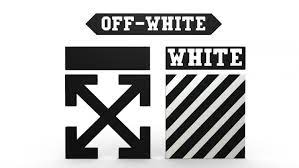
In the decade since, Off-White has dominated luxury. It's regularly ranked "most popular" luxury brand in the world and has collabed w/ huge brands: Nike, Ikea, Rimowa, Kith, Moet.
In 2018, LVMH tapped Abloh as artistic director for menswear.
What's behind the success?
In 2018, LVMH tapped Abloh as artistic director for menswear.
What's behind the success?

Abloh has been very transparent about his process.
He posts in-progress work to his 6m IG followers. And, in 2017, did lectures at Rhode Island, Columbia and Harvard.
Here are 10 key insights (Abloh calls them "cheat codes" that young people can use for their own career).
He posts in-progress work to his 6m IG followers. And, in 2017, did lectures at Rhode Island, Columbia and Harvard.
Here are 10 key insights (Abloh calls them "cheat codes" that young people can use for their own career).

Insight #1: "Readymade" (Build on what already exists)
Abloh cautions against the instinct to create stuff from scratch. Build on the aesthetic of a mentor (dead or alive). Odd are, these mentors did the same.
Abloh cautions against the instinct to create stuff from scratch. Build on the aesthetic of a mentor (dead or alive). Odd are, these mentors did the same.

The artist that influenced this view is Marcel Duchamp, who is known for his "readymade" artwork ("ordinary manufactured objects that is modified").
Duchamp's most famous work is the most ordinary of objects: a repurposed urinal ("Duchamp's Fountain").
Duchamp's most famous work is the most ordinary of objects: a repurposed urinal ("Duchamp's Fountain").

Readymade work has the huge benefit of being recognizable. It's easier to capture mindshare, when building on existing ideas (like a DJ who "remixes" a hit song).
The Off-White logo is a perfect example: Abloh grounds the visual of his brand in a ubiquitous shape ("arrows").
The Off-White logo is a perfect example: Abloh grounds the visual of his brand in a ubiquitous shape ("arrows").

Insight #2: The 3% rule
Human's desire 2 competing things: familiarity (for comfort) and novelty (for curiosity).
Abloh builds on existing work by making a 3% change to the original form, thus fulfilling both desires.
His best example is the updating of popular Nike shoes.
Human's desire 2 competing things: familiarity (for comfort) and novelty (for curiosity).
Abloh builds on existing work by making a 3% change to the original form, thus fulfilling both desires.
His best example is the updating of popular Nike shoes.

Insight #3: The power of humor
Abloh says humor is "an entry point of humanity". You open up when you laugh.
On the internet, "ironic humor" and memes are the go-to language.
Along these lines: Abloh made a "keep off" rug for Ikea and a transparent luggage for Rimowa.
Abloh says humor is "an entry point of humanity". You open up when you laugh.
On the internet, "ironic humor" and memes are the go-to language.
Along these lines: Abloh made a "keep off" rug for Ikea and a transparent luggage for Rimowa.

Insight #4: Don't be a perfectionist
Abloh will often complete only 70% of a project before moving on. By not making everything "perfect", he can experiment and keep learning by working.
Abloh will often complete only 70% of a project before moving on. By not making everything "perfect", he can experiment and keep learning by working.
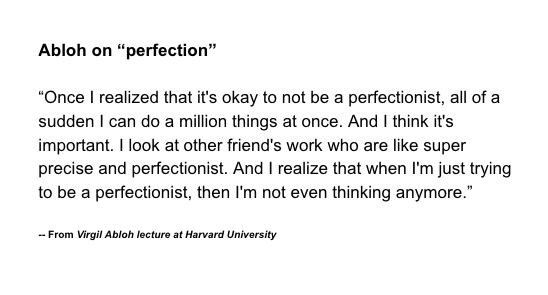
Insight #5: Sharing your work
As part of not chasing perfection, Abloh regularly shows his work-in-progress on Instagram.
It demystifies the process and is a way to inspire others.
As part of not chasing perfection, Abloh regularly shows his work-in-progress on Instagram.
It demystifies the process and is a way to inspire others.

Insight #6: Build a foundational skillset
Abloh's work is grounded in his engineer/architect background:
◻️Analyze problems
◻️Design solutions
◻️Implement ideas
◻️Defend the logic.
The process gives him confidence and conviction in any project he takes on.
Abloh's work is grounded in his engineer/architect background:
◻️Analyze problems
◻️Design solutions
◻️Implement ideas
◻️Defend the logic.
The process gives him confidence and conviction in any project he takes on.
Insight #7: A WhatsApp-powered workflow
Abloh says his primary tool is a "fully-charged iPhone" and his work style is "conversational".
He manages his different projects via WhatsApp chats, which are real-time and don't impede the creative process (like email might).
Abloh says his primary tool is a "fully-charged iPhone" and his work style is "conversational".
He manages his different projects via WhatsApp chats, which are real-time and don't impede the creative process (like email might).

Insight #8: Collaboration is key (with any age)
Abloh's interest in many fields means he's always looking to collaborate and cross-polinate.
He'll keep company with 76-year old Rem Koolhass as well as teenagers he meets on IG (he's even hired a few just from DMs).
Abloh's interest in many fields means he's always looking to collaborate and cross-polinate.
He'll keep company with 76-year old Rem Koolhass as well as teenagers he meets on IG (he's even hired a few just from DMs).

Insight #9: The importance of the immigrant perspective
Abloh's comfort with many disciplines is partly born from his upbringing. If his father Nee had accepted the "box" he was born in, he never would have come to America.
For the same reason, Abloh won't be put in a box.
Abloh's comfort with many disciplines is partly born from his upbringing. If his father Nee had accepted the "box" he was born in, he never would have come to America.
For the same reason, Abloh won't be put in a box.

Insight #10: Create a "Personal Design Language"
Abloh says that each artist has a throughline across all their work.
The way he is able to build a throughline is through a "Personal Design Language" that keeps his work internally consistent.
Here is his (via Harvard lecture):
Abloh says that each artist has a throughline across all their work.
The way he is able to build a throughline is through a "Personal Design Language" that keeps his work internally consistent.
Here is his (via Harvard lecture):

After selling 60% of Off-White to LVMH, Abloh's design language will now permeate across the $350B+ luxury giant.
It won't be only fashion. He'll take on LVMH's spirits and hospitality arms, getting equity in anything he incubates.
"I'm getting a seat at the table", says Abloh.
It won't be only fashion. He'll take on LVMH's spirits and hospitality arms, getting equity in anything he incubates.
"I'm getting a seat at the table", says Abloh.
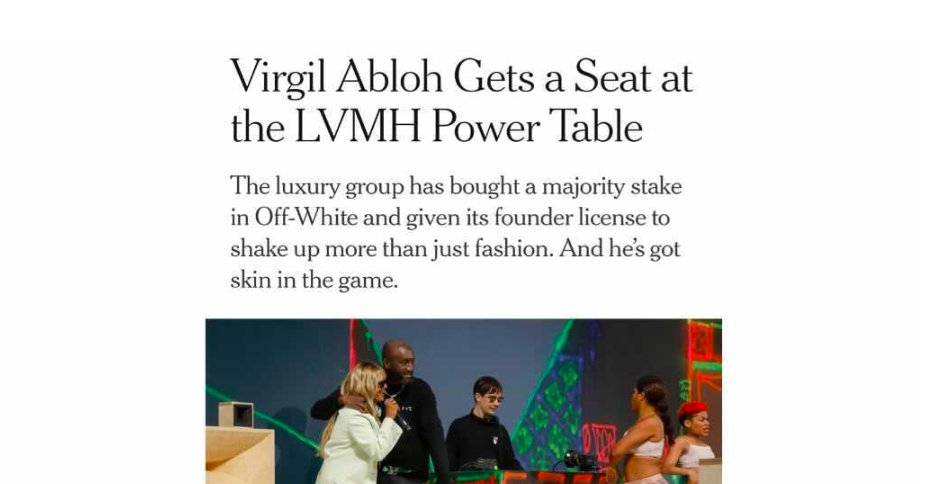
If you enjoyed that, def FOLLOW @TrungTPhan for other threads that will make your smarter, sprinkled in with memes that will make you dumber.
Like this remix of Apple's "Think Different" ad:
Like this remix of Apple's "Think Different" ad:
https://twitter.com/TrungTPhan/status/1400465040927387651?s=20
PS: If multidisciplinary thinking is your cup of tea (and it def is), check out this thread on cross-industry innovations:
https://twitter.com/TrungTPhan/status/1381277018373771269?s=20
• • •
Missing some Tweet in this thread? You can try to
force a refresh


